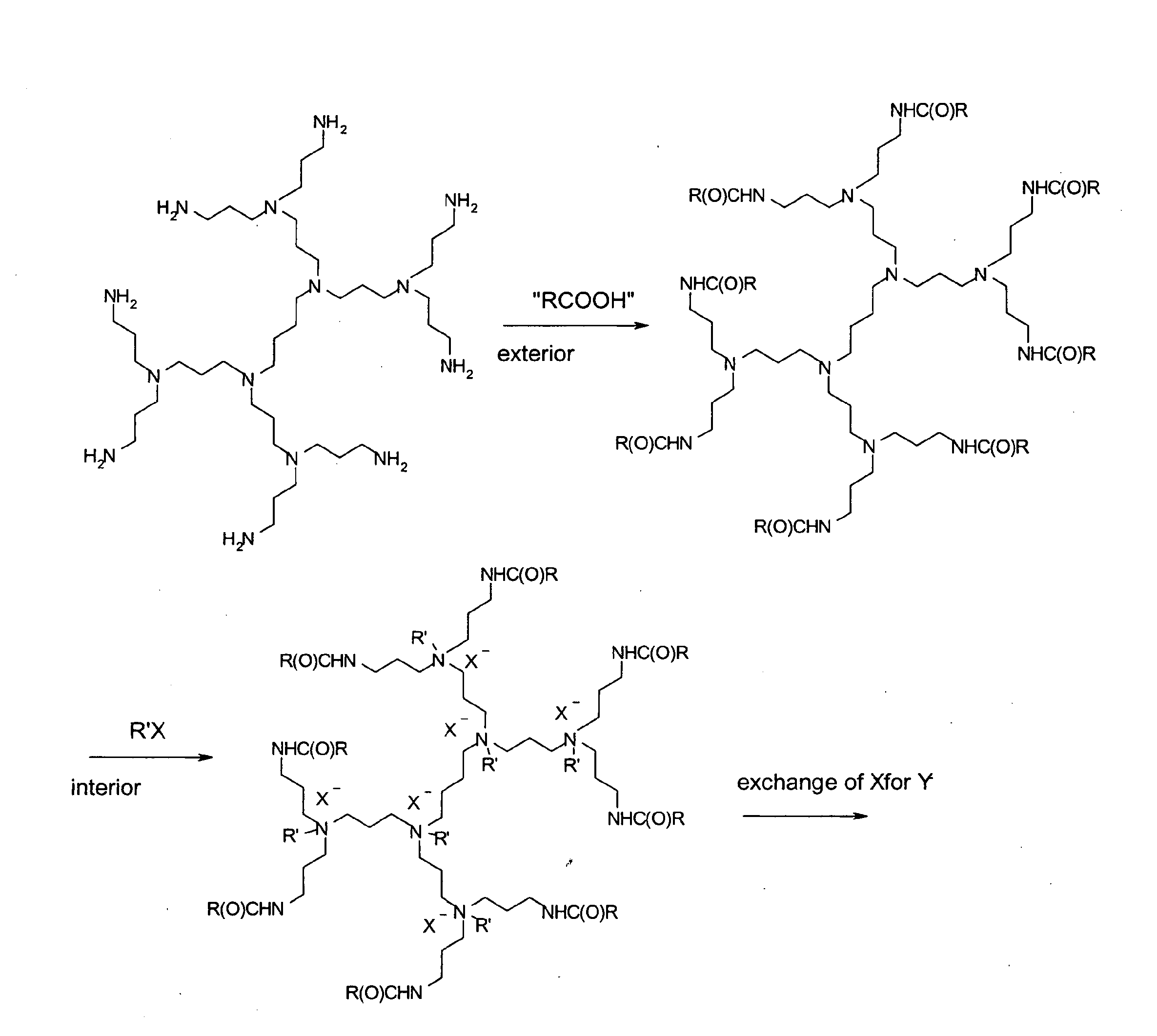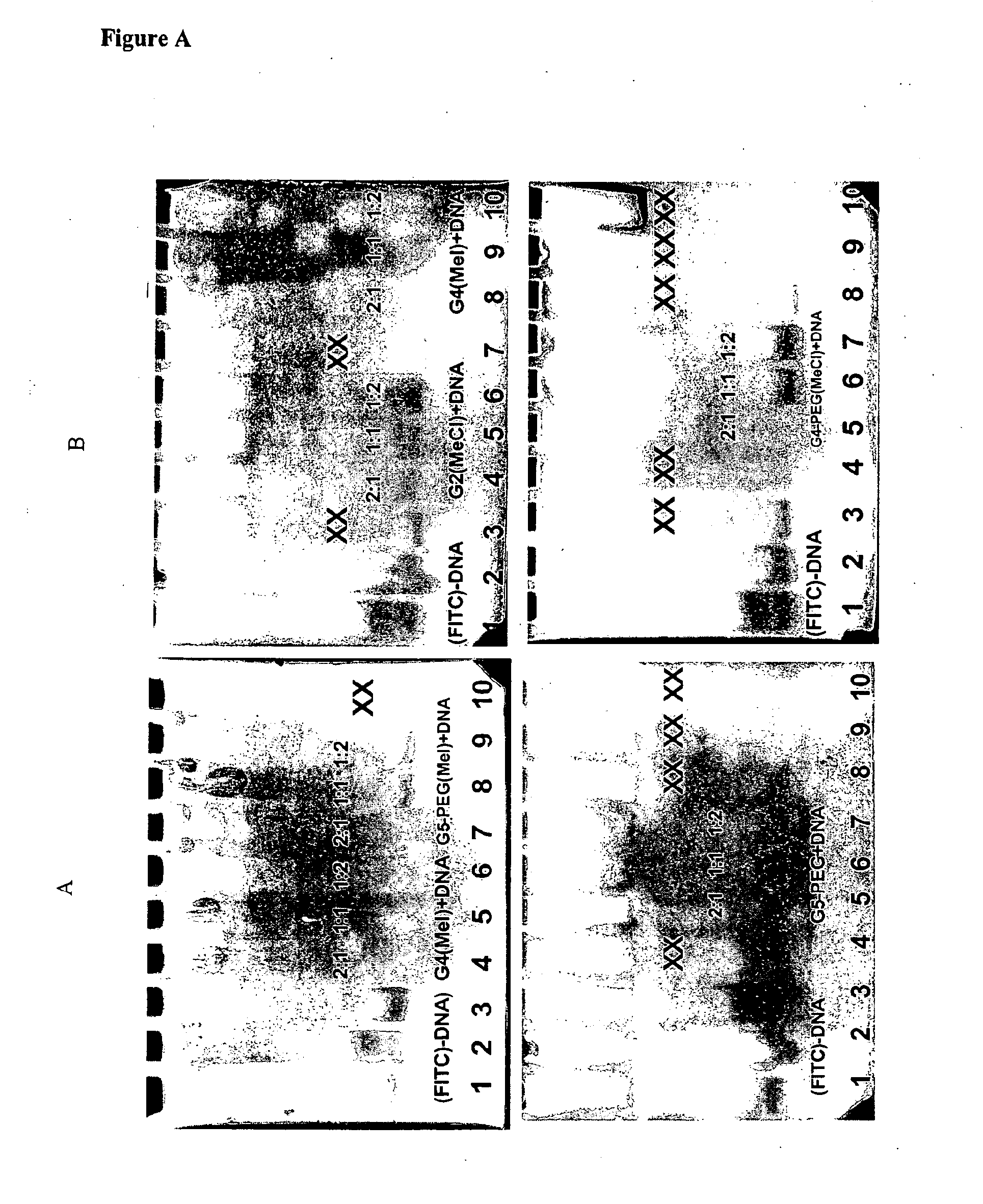MODIFIED POLY(PROPYLENE-IMINE) DENDRIMERS AND THEIR USE AS TRANSFECTION AGENTS FOR AMIONIC BIOACTIVE FACTORS ( as amended
a technology of amionic bioactive factors and dendrimers, which is applied in the direction of genetic material ingredients, drug compositions, organic chemistry, etc., can solve the problems of cationically modified dendrimers most likely degrading, not stable, and slow degradation of ppi-dendrimers with amine end groups in water
- Summary
- Abstract
- Description
- Claims
- Application Information
AI Technical Summary
Problems solved by technology
Method used
Image
Examples
Embodiment Construction
[0009]According to the present invention, a modified poly-(propylene imine) dendrimer is presented, wherein the poly-(propylene imine) dendrimer is modified at both the exterior and the interior with the aim to create water soluble, hydrolytically stable and non-toxic transfection agents for anionic bioactive factors. The PPI-dendrimers have been modified at the exterior by turning the amine end groups into groups of Formula (I)
wherein R is a radical selected from the group of C1-10alkyl, polyethylene glycol radical and polyethylene glycol gallyl radical, as these end groups preserve the water solubility, while it is proved that blocking the amine end groups generates non-toxic species.
[0010]The interior of the PPI-dendrimers has been modified by reacting the internal (predominantly tertiary) amine groups with a quaternization agent, such as methyl iodide, methyl chloride and the like, thus creating a micro-environment with multiple quaternary cationic sites. Depending on the genera...
PUM
| Property | Measurement | Unit |
|---|---|---|
| Mass | aaaaa | aaaaa |
| Molecular weight | aaaaa | aaaaa |
| Therapeutic | aaaaa | aaaaa |
Abstract
Description
Claims
Application Information
 Login to View More
Login to View More - R&D Engineer
- R&D Manager
- IP Professional
- Industry Leading Data Capabilities
- Powerful AI technology
- Patent DNA Extraction
Browse by: Latest US Patents, China's latest patents, Technical Efficacy Thesaurus, Application Domain, Technology Topic, Popular Technical Reports.
© 2024 PatSnap. All rights reserved.Legal|Privacy policy|Modern Slavery Act Transparency Statement|Sitemap|About US| Contact US: help@patsnap.com










